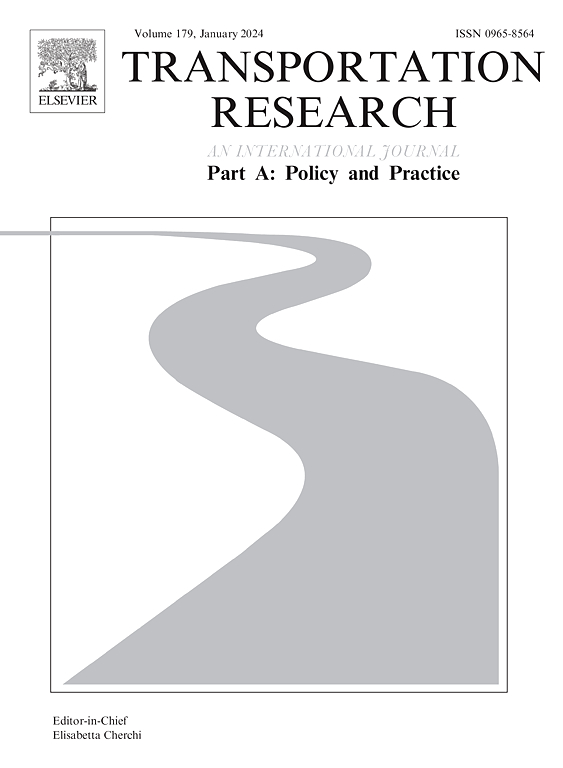Vertiport location for eVTOL considering multidimensional demand of urban air mobility: An application in Beijing
IF 6.3
1区 工程技术
Q1 ECONOMICS
Transportation Research Part A-Policy and Practice
Pub Date : 2025-02-01
DOI:10.1016/j.tra.2024.104353
引用次数: 0
Abstract
The development of electric vertical take-off and landing aircraft (eVTOL) is expected to provide a new mode of transportation and effectively alleviate traffic congestion in large cities. Vertiports are necessary landing and take-off facilities for eVTOL. The selection of the appropriate locations for vertiports is highly important for the development of urban air mobility (UAM). In this study, a systematic vertiport location method is constructed to facilitate UAM development. First, the UAM demand is evaluated considering the differences in UAM services. The demand is divided into on-demand mobility (ODM) demand and regular shuttle (RS) demand, which are separately evaluated with a discrete choice model. Then, the multidimensional polygon intersection point set (MPIPS) is deployed to determine the potential vertiport location. To improve the demand coverage of travel and decrease traffic congestion and redundant demand coverage, a multiobjective multistage facility maximum coverage location model is developed for vertiports. The nondominated sorting genetic algorithm, version 3 (NSGA-III), with three location strategies, namely, step-by-step, forward prioritization, and balanced development, is proposed to solve the model. Data from Beijing are used to validate the proposed model. The results indicate that the balanced development algorithm achieves the best performance, with an 84.4 % coverage rate of the RS demand and a 44.4 % coverage rate of the ODM demand. Constructing vertiports in high travel demand areas can significantly improve ODM and RS demand coverage and the ability to alleviate traffic congestion but inevitably leads to facility redundancy. However, constructing vertiports in high GDP areas would only marginally increase ODM demand coverage and have a negative effect on other metrics. Moreover, constructing vertiports in inaccessible areas can improve ODM demand coverage and decrease facility redundancy but reduces the ability to alleviate traffic congestion at facilities. These findings can improve the application of eVTOL, alleviate traffic congestion, reduce wasted construction resources, and optimize synergistic capabilities within the UAM system.
求助全文
约1分钟内获得全文
求助全文
来源期刊
CiteScore
13.20
自引率
7.80%
发文量
257
审稿时长
9.8 months
期刊介绍:
Transportation Research: Part A contains papers of general interest in all passenger and freight transportation modes: policy analysis, formulation and evaluation; planning; interaction with the political, socioeconomic and physical environment; design, management and evaluation of transportation systems. Topics are approached from any discipline or perspective: economics, engineering, sociology, psychology, etc. Case studies, survey and expository papers are included, as are articles which contribute to unification of the field, or to an understanding of the comparative aspects of different systems. Papers which assess the scope for technological innovation within a social or political framework are also published. The journal is international, and places equal emphasis on the problems of industrialized and non-industrialized regions.
Part A''s aims and scope are complementary to Transportation Research Part B: Methodological, Part C: Emerging Technologies and Part D: Transport and Environment. Part E: Logistics and Transportation Review. Part F: Traffic Psychology and Behaviour. The complete set forms the most cohesive and comprehensive reference of current research in transportation science.

 求助内容:
求助内容: 应助结果提醒方式:
应助结果提醒方式:


